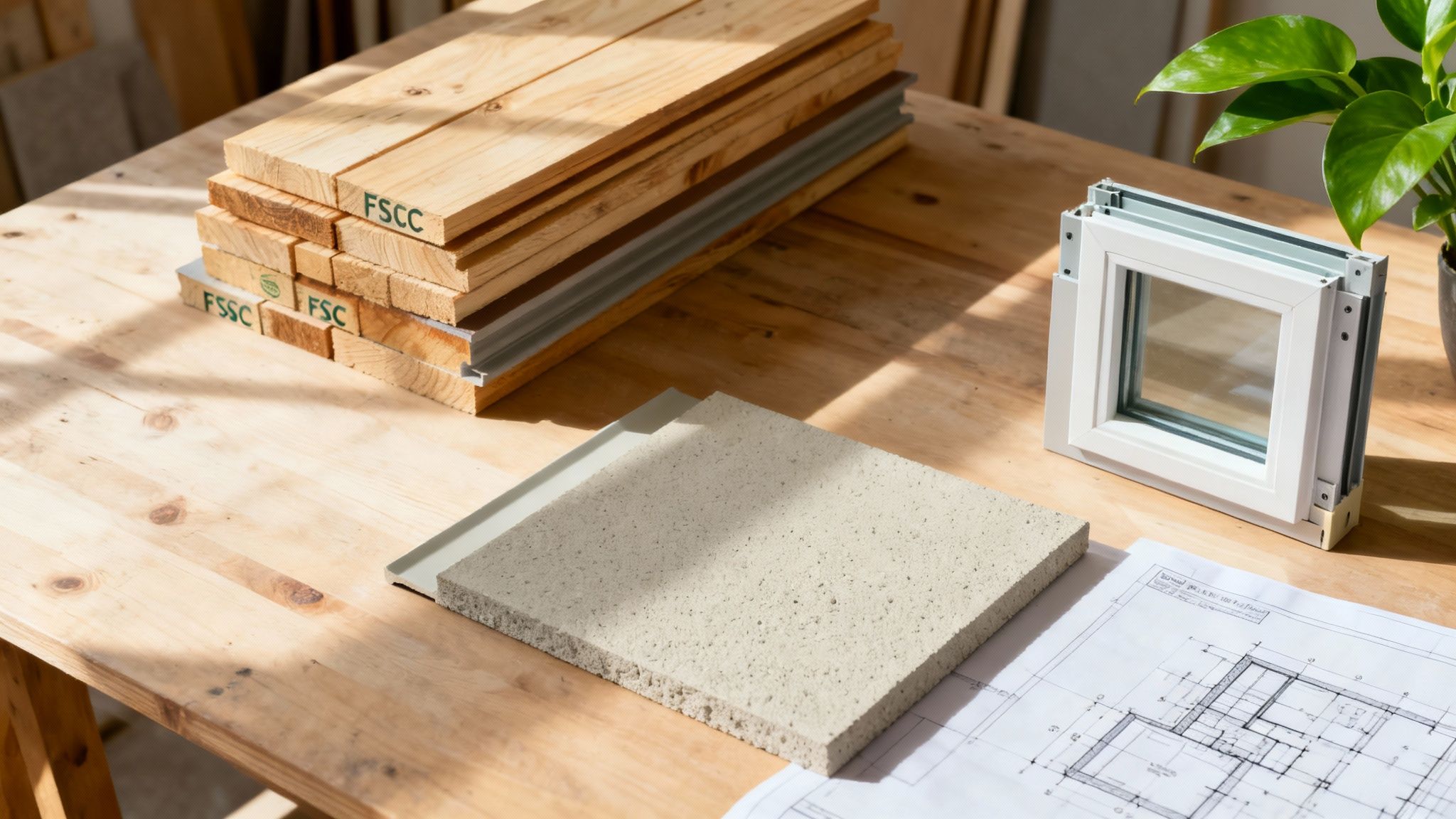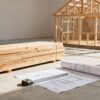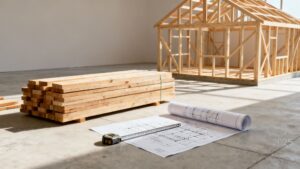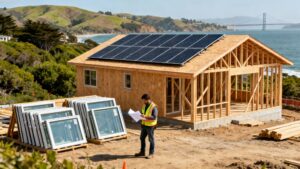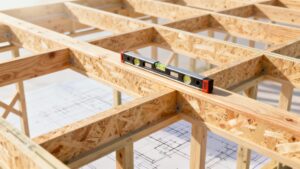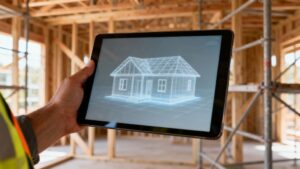When sourcing materials for a project, you need something that is durable, efficient, and has a low environmental impact. For builders, architects, and homeowners in the Bay Area, this isn't just about trends. It's about building healthy, high-performing homes that meet California's high standards.
This guide provides clear, practical advice on selecting materials that are genuinely smart, sustainable, and strong. At Truitt & White, we believe green building is simply better building. It means making choices that benefit the project, the occupants, and our local environment from Berkeley to San Francisco.
Why Sustainable Building Materials Matter in the Bay Area
Choosing the right building materials can be challenging. You need products that look great and last for decades. At the same time, clients increasingly want homes that are healthy for their families and good for the planet.
Many builders and architects know that sustainability is now a baseline expectation, not just a passing trend. In fact, a recent report shows that two out of three architects rank product quality and environmental impact among their top criteria when selecting materials. This guide will help you meet that demand with confidence.
A Core Requirement in Modern Construction
The global market for sustainable construction materials was recently valued at nearly USD 430 billion. It is expected to exceed USD 1.3 trillion by 2034. This major shift is driven by a few key factors we see every day in the Bay Area:
- Stricter Building Codes: California’s energy codes, like Title 24, are constantly raising the bar for performance.
- Informed Clients: Homeowners and developers are more aware of the health and environmental footprint of their material choices.
- Long-Term Value: People realize that durable, efficient materials lead to lower utility bills and less maintenance.
This flowchart shows how smart, sustainable, and strong principles work together.
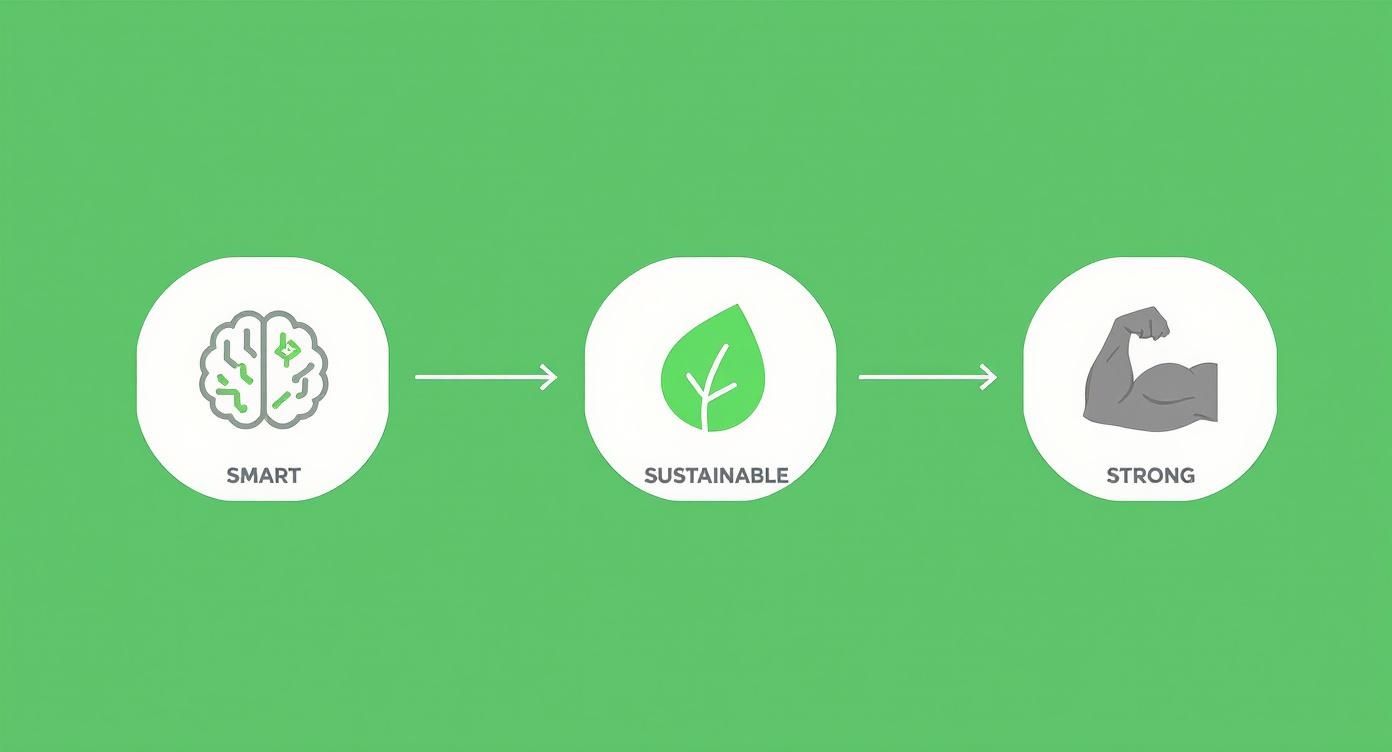
As the graphic shows, the goal is to find materials that balance high performance (smart), low environmental impact (sustainable), and proven durability (strong). It is a complete approach, not just checking one box.
It's a Holistic Approach, Not Just a Shopping List
A truly sustainable project is not just about the products you buy. It is about how they work together as a system. For example, passive solar home design principles use a building’s orientation and materials to maximize natural heating and cooling.
This kind of system-level thinking is what modern green building is all about. For a deeper look at the fundamentals, check out our guide on what is sustainable building.
Key Pillars of Sustainable Material Selection
| Principle | What It Means for Your Project |
|---|---|
| Environmental Impact | Looking beyond price to understand a material's full carbon footprint, from manufacturing to disposal. |
| Durability & Performance | Choosing materials that last, reducing the need for replacements and minimizing waste over the building’s life. |
| Health & Transparency | Prioritizing non-toxic materials with clear documentation about their ingredients. |
| Sourcing & Logistics | Considering where materials come from and the energy needed to get them to your Bay Area job site. |
| Lifecycle Cost | Evaluating the total cost, including maintenance, energy savings, and eventual replacement. |
By keeping these pillars in mind, you can make choices that deliver value on every level.
By focusing on the entire lifecycle of a material—from sourcing to disposal—we can create buildings that are not only eco-friendly but also healthier and more resilient for generations.
Decoding Certifications That Actually Mean Something
Many products are labeled "eco-friendly" or "green." For builders and architects in Berkeley and Oakland, it is important to know which labels are trustworthy.
Third-party certifications provide a transparent look at a material's real-world impact. Knowing which labels to trust helps you choose materials that are genuinely better for the environment and built to last.
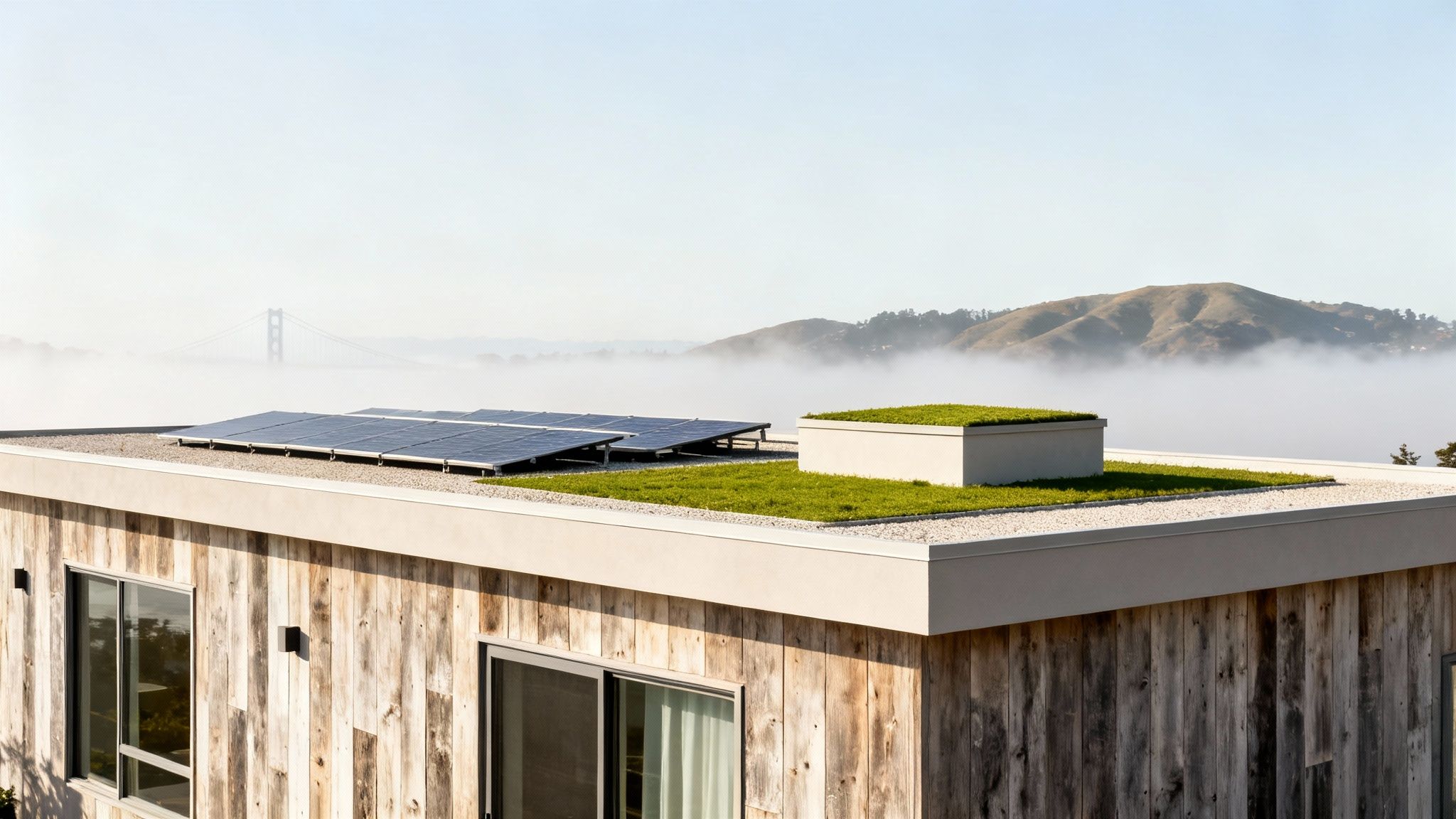
FSC: The Gold Standard for Wood
The Forest Stewardship Council (FSC) certification is the most credible stamp for lumber. It is a global standard that guarantees the wood comes from a responsibly managed forest.
An FSC stamp tells you several important things:
- Responsible Harvesting: The forest is managed to protect biodiversity and the ecosystem.
- Worker Rights: Forest workers are treated fairly, and local communities benefit from the operations.
- Chain of Custody: The wood is tracked from the forest to our lumberyard in Berkeley, so you know its origin.
For a contractor, choosing FSC-certified lumber is one of the most direct ways to support sustainable forestry. It ensures a home's structure is not built at the expense of vital forests.
Looking Deeper: Material Health and Transparency
Many Bay Area projects now focus on the health impacts of building materials. This is especially true for projects aiming for high standards like LEED. For more on that topic, see our guide on what LEED certification is and why it matters.
Three key labels provide transparency about a product's ingredients:
- Declare Label: This is like a nutrition label for building products. It lists all ingredients and flags chemicals on the "Red List" of substances to avoid in green building.
- Cradle to Cradle (C2C): This certification looks at a product’s entire lifecycle. It assesses material health, recyclability, renewable energy use, water stewardship, and social fairness.
- Health Product Declaration (HPD): This is a technical report. An HPD details a product's contents and their relation to human and ecological health.
Putting It All Together on the Job Site
When specifying materials for a remodel in Oakland or a new build in San Francisco, look for these labels. They provide the assurance you need to meet client expectations and local building codes.
Instead of just taking a manufacturer's "green" claims at face value, these certifications offer objective proof. At Truitt & White, we prioritize sourcing products with these trusted certifications to help you build responsibly without the guesswork.
Choosing Sustainable Lumber and Wood Products
In the Bay Area, lumber is the backbone of most homes. Your choice of wood has a major impact on a project's environmental footprint. Luckily, selecting smart, sustainable, and strong lumber is straightforward when you know your options.
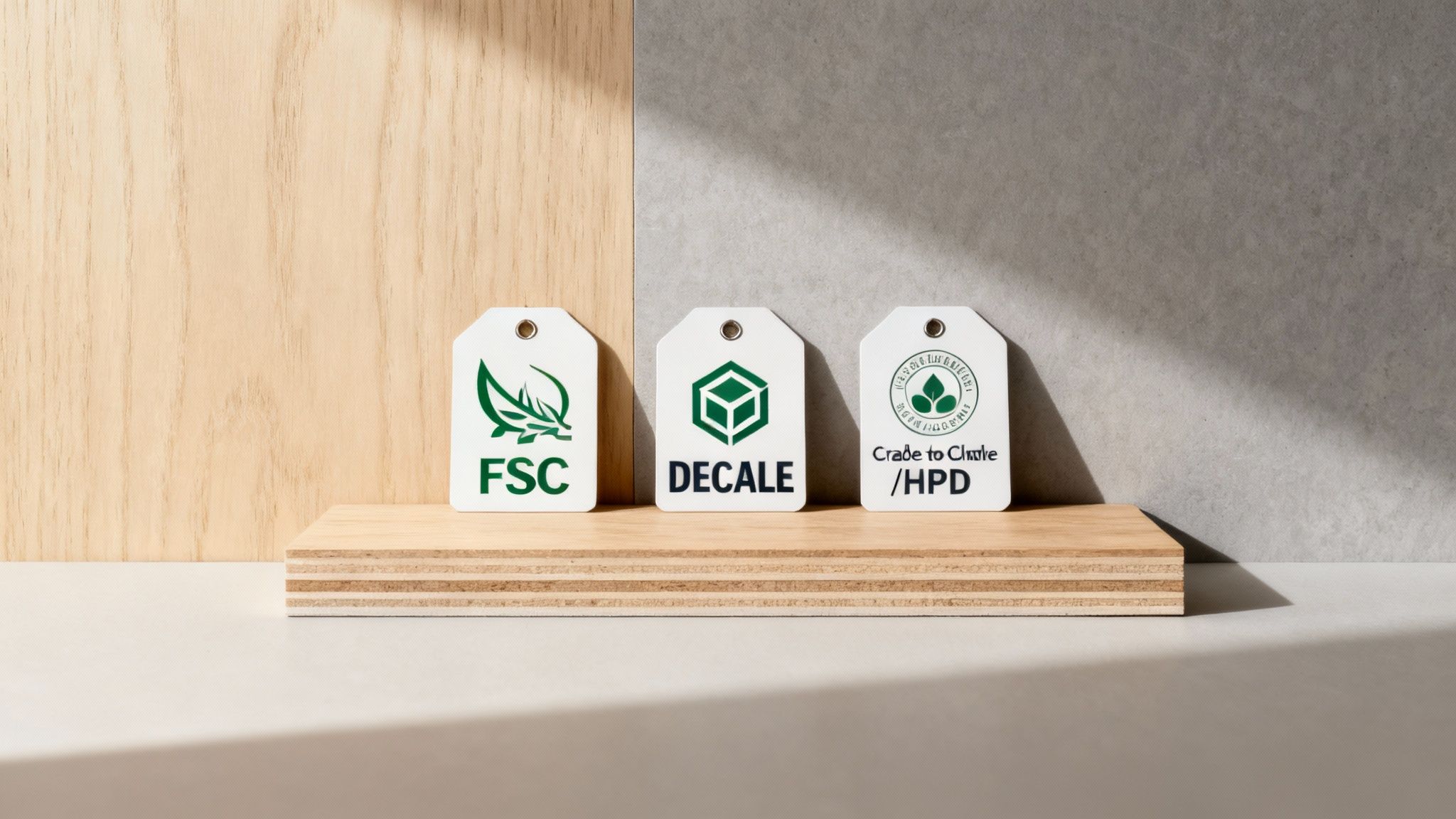
This often means looking for wood products that meet California's tough environmental standards. From certified lumber to reclaimed beams, the right choice improves both the quality of the build and its ecological story.
Prioritize FSC Certified Lumber for New Builds
When your project requires new wood, specifying FSC-certified lumber is the best way to ensure it was sourced responsibly. The FSC system tracks wood from the forest to our Berkeley lumberyard. This guarantees the material comes from forests managed to protect biodiversity and support local communities.
For contractors and architects, demanding the FSC stamp shows your clients you are committed to building with integrity. That is why we stock a wide range of FSC-certified products at Truitt & White.
Embrace Reclaimed Wood for Character and Low Impact
Reclaimed wood is a fantastic option for a unique look with a minimal environmental footprint. Sourced from old structures like barns and warehouses, this timber adds rich character to any space. It is a natural fit for the distinct architectural styles found throughout San Francisco and the East Bay.
Reclaimed wood also offers major sustainability benefits:
- Reduced Waste: It keeps usable lumber out of landfills.
- Lower Embodied Carbon: It avoids the energy and emissions from harvesting and milling new timber.
- Superior Quality: Old-growth reclaimed wood is often denser and more stable than new lumber, providing exceptional strength.
Using reclaimed wood is not just a design choice; it is a commitment to a circular economy. Each piece tells a story while preventing the need to harvest new resources.
Leverage Engineered Wood for Resource Efficiency
Not every part of a build requires solid-sawn lumber. Engineered wood products like I-joists and laminated veneer lumber (LVL) are designed to maximize resources. They use wood fibers and fast-growing trees to create strong, consistent structural components.
This means fewer trees are needed to produce the same amount of building material. Engineered wood also reduces job site waste because it is made to precise dimensions. For a deeper dive into different wood types, check out our expert guide to eco-friendly lumber in the East Bay.
The market for renewable materials is growing quickly. According to Precedence Research, bamboo recently made up 40% of the sustainable construction materials market’s revenue share. This shows a major industry shift toward rapidly renewable alternatives.
Smart Choices for Windows, Doors, and Siding
A sustainable building needs a high-performance envelope. Your choices in windows, doors, and siding are the first line of defense against the elements. They have a massive impact on a home's long-term energy use, especially in the Bay Area.

These parts do more than just look good—they manage heat, light, and moisture. Getting these choices right means lower utility bills, a more comfortable living space, and a building that stands up to our coastal climate.
Selecting High-Performance Windows
Windows are critical for energy efficiency. In California, Title 24 energy codes set strict requirements, making high-performance windows a necessity.
Two important ratings to look for on window labels are:
- U-Factor: This measures how well a window prevents heat from escaping. A lower U-Factor means better insulation.
- Solar Heat Gain Coefficient (SHGC): This tells you how much solar radiation a window blocks. In our sunny climate, a lower SHGC helps keep homes cool in the summer.
According to ENERGY STAR, certified windows can lower a home's energy bills by an average of 12% nationwide. For a typical home, this can mean hundreds of dollars in savings each year.
Window frame material also matters. Fiberglass and wood-clad windows offer superior durability and efficiency compared to vinyl. Brands like Marvin and Andersen offer excellent fiberglass options that resist warping and fading, making them a strong choice for the Bay Area.
For more information, see our guide to the best windows for energy efficiency.
Durable Doors for Security and Efficiency
A front door is a key part of the building envelope. An uninsulated or poorly sealed door can be a major source of energy loss. Choosing an ENERGY STAR certified model ensures you are installing a high-performance product.
Fiberglass and steel doors often provide better insulation than wood and will not warp or crack in the Bay Area's climate. Look for doors with an insulated core and good weatherstripping to prevent drafts.
Siding That Blends Durability and Sustainability
Siding protects the structure from moisture, pests, and fire—all important considerations in California. Two popular sustainable siding options are:
- Fiber Cement: Made from sand, cement, and cellulose fibers, this composite is incredibly durable. It is fire-resistant and holds paint well, which means less frequent repainting.
- FSC-Certified Wood: For a classic look, real wood is a great choice. By choosing FSC-certified wood, you ensure it comes from a responsibly managed forest.
Thinking About Lifecycle Cost and Local Sourcing
The cheapest material is rarely the best investment. A sustainable approach considers the entire life of a material—from the energy used to make it to its disposal decades later. This is called lifecycle thinking.
Materials with a higher initial price often save money over time. The savings come from lower energy bills, less maintenance, and greater durability. Sustainability is a smart financial strategy that builds long-term value.
Look Beyond the Price Tag
A lifecycle assessment (LCA) helps you see the big picture. It calculates a material's environmental impact at every stage: raw material extraction, manufacturing, transportation, use, and disposal. This holistic view helps you balance cost, performance, and environmental responsibility.
For example, a metal roof costs more upfront than asphalt shingles. But a quality metal roof can last 50 years or more with little upkeep, as noted by the key benefits of metal roofing. That is a return on investment asphalt cannot match.
Key Takeaway: The real cost of a building material includes installation, maintenance, energy use, and eventual replacement. The right material pays for itself over time.
The Power of Sourcing Locally in the Bay Area
Where your materials come from is as important as what they are. Sourcing locally from suppliers near Berkeley and Oakland reduces transportation emissions.
Buying local also offers other benefits:
- Supports the Local Economy: It keeps money in our communities.
- Fewer Logistical Issues: Shorter supply chains mean faster lead times and easier returns.
- Products Suited for the Climate: Local suppliers stock products proven to perform in the Bay Area’s unique environment.
By combining lifecycle thinking with local sourcing, you can make choices that are both economically smart and environmentally sound. At Truitt & White, we are proud to be an eco-friendly lumber supplier in the East Bay, connecting local projects with high-quality, sustainable materials.
Your Partner in Sustainable Building
Making smart and sustainable material choices is easier with the right partner. Our team at Truitt & White is here to help you put these principles into practice on your Bay Area projects. We are more than a supplier; we are a resource for builders, contractors, and architects who value quality.
Our job is to connect your vision with the best materials available. We help you cut through the noise of selecting environmentally responsible building materials, ensuring your project exceeds California's tough standards.
From Blueprint to Build
Sorting through material specs and local codes can be a challenge. Bring your plans to our Berkeley showroom and talk with our experts. We can help you find the right solutions for your project's unique needs.
Choosing sustainable materials shouldn't be guesswork. It is about combining your expertise with a supplier who understands green building in our local climate.
Let our team show you the real-world advantages of materials like:
- FSC-certified lumber from responsibly managed forests.
- Energy-efficient windows from brands like Marvin that exceed California's Title 24 requirements.
- Low-VOC finishes and adhesives that ensure healthy indoor air quality.
Get Expert Advice for Your Next Project
Whether you are building a custom home in the Oakland hills or remodeling a historic property in San Francisco, we can help. We offer practical advice grounded in the architectural styles and environmental demands of our region.
For personalized guidance on sourcing smart, sustainable, and strong materials, contact Truitt & White today or visit our Berkeley showroom to speak with an expert.
Frequently Asked Questions About Green Building Materials
1. What is the most important certification for wood products?
The most important certification for wood is from the Forest Stewardship Council (FSC). This label guarantees that the lumber comes from a forest that is managed responsibly. Specifying FSC-certified wood for your Bay Area project is a powerful way to support sustainable forestry.
2. Are sustainable building materials always more expensive?
Not necessarily. While some high-performance materials may have a higher initial cost, they often provide long-term savings. This comes from better energy efficiency, lower maintenance needs, and a longer lifespan, which reduces the total lifecycle cost.
3. What does "low-VOC" mean and why does it matter?
VOC stands for Volatile Organic Compounds, which are harmful chemicals found in many paints, adhesives, and finishes. These chemicals can be released into the air, negatively affecting indoor air quality. Choosing low-VOC products is a crucial step for creating a healthier indoor environment for your clients.
4. How can I ensure my Bay Area project meets green building codes?
The best way to stay current with local codes in cities like Berkeley, Oakland, and San Francisco is to work with a knowledgeable local supplier. Choosing products with trusted certifications, such as ENERGY STAR for windows and doors, is also a great strategy. Our team at Truitt & White stays up-to-date on local regulations to help you select compliant, high-performance materials.
5. Does using reclaimed wood compromise structural integrity?
No, as long as it is sourced from a reputable supplier. Quality reclaimed wood is often denser and stronger than new lumber because it typically comes from old-growth trees. It is an excellent choice for structural beams, flooring, and siding, adding both character and proven strength.
At Truitt & White, our mission is to help you make informed decisions that meet your project goals and California’s high sustainability standards. For expert advice and to see our selection of green building materials, visit our Berkeley showroom or contact us today.


